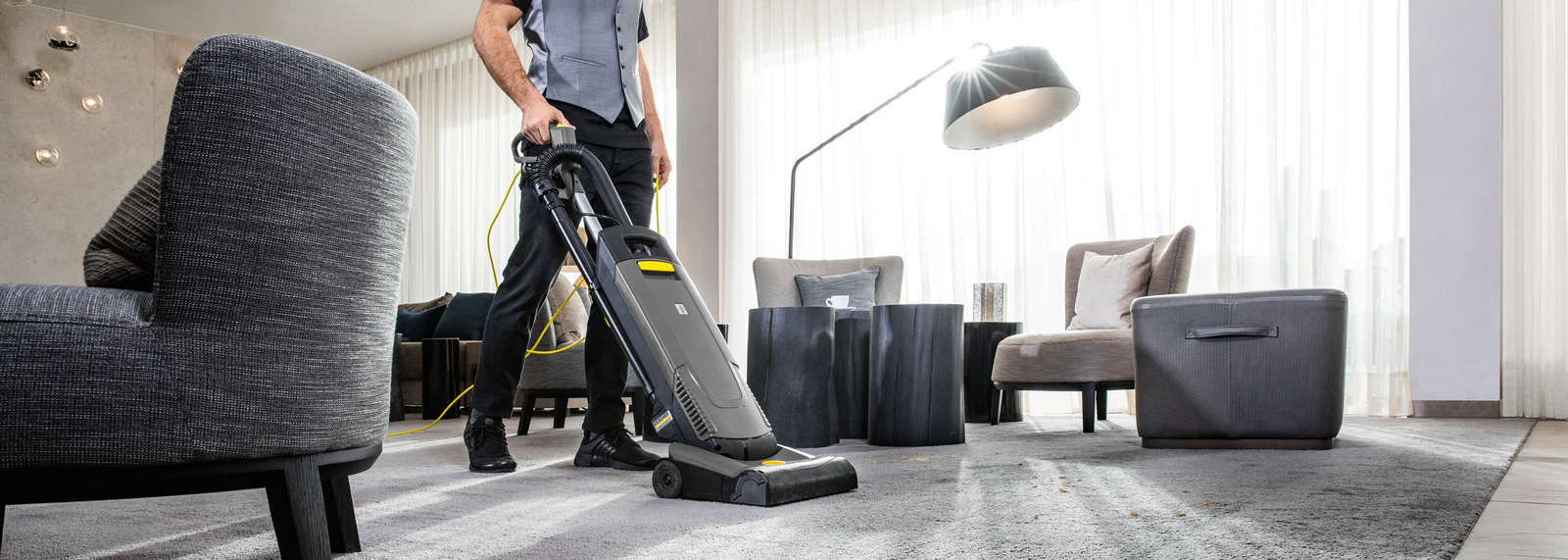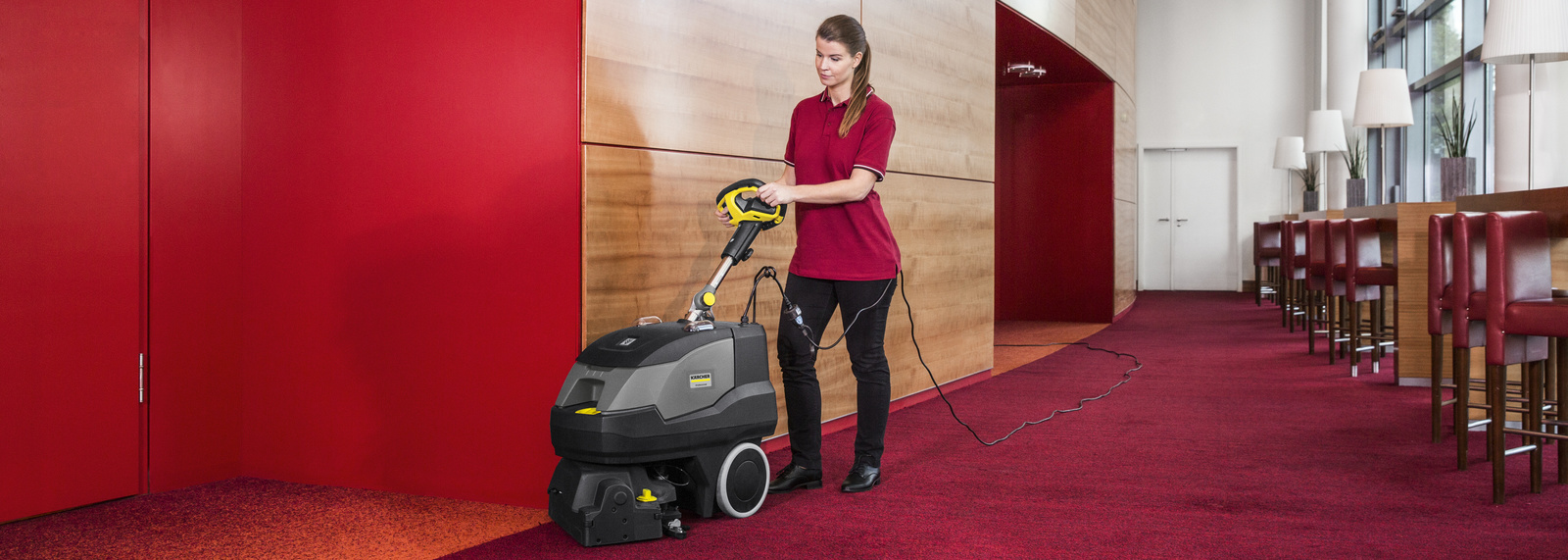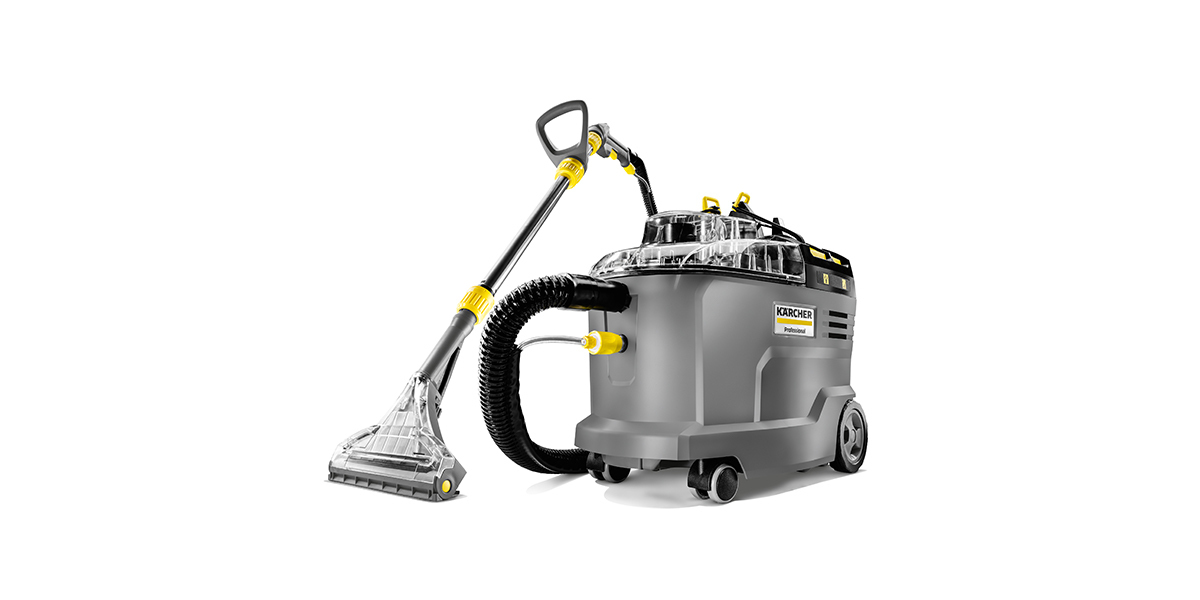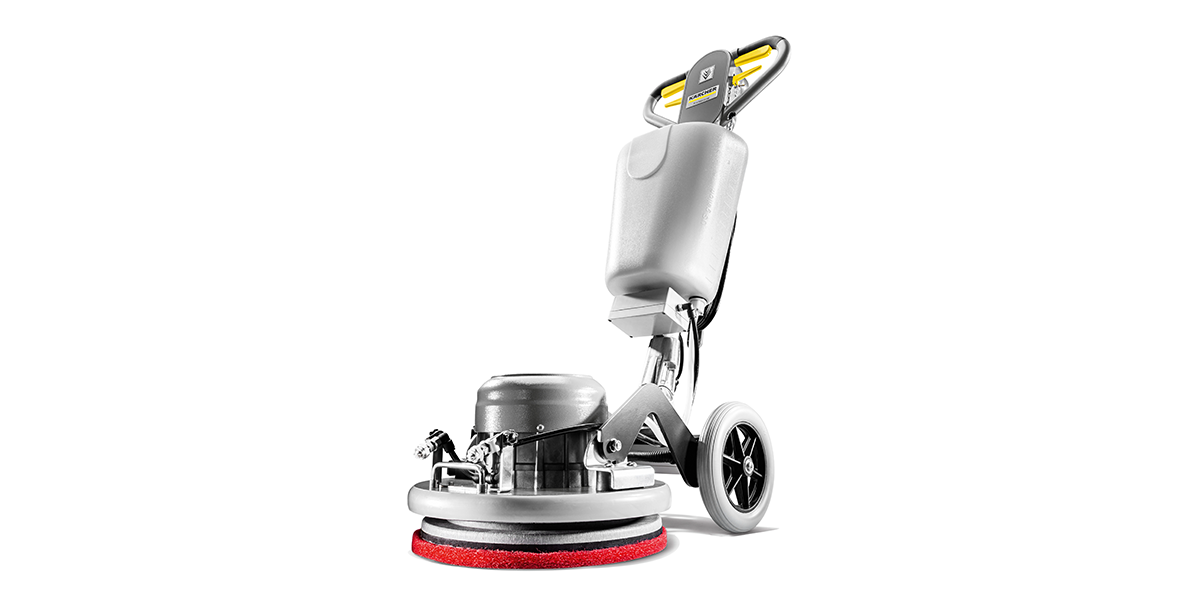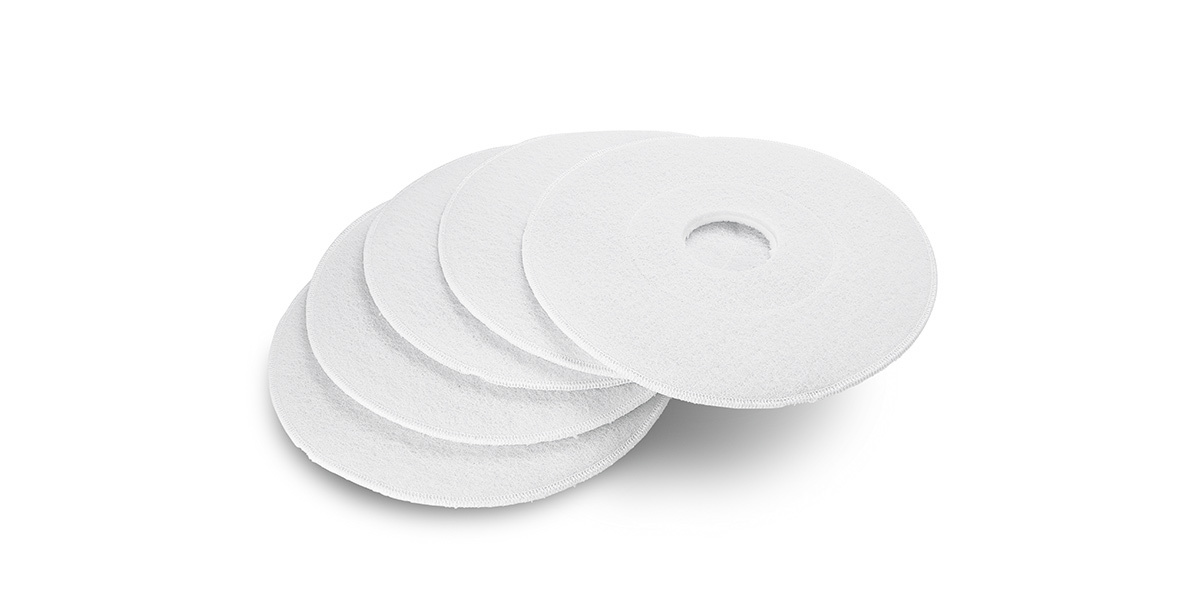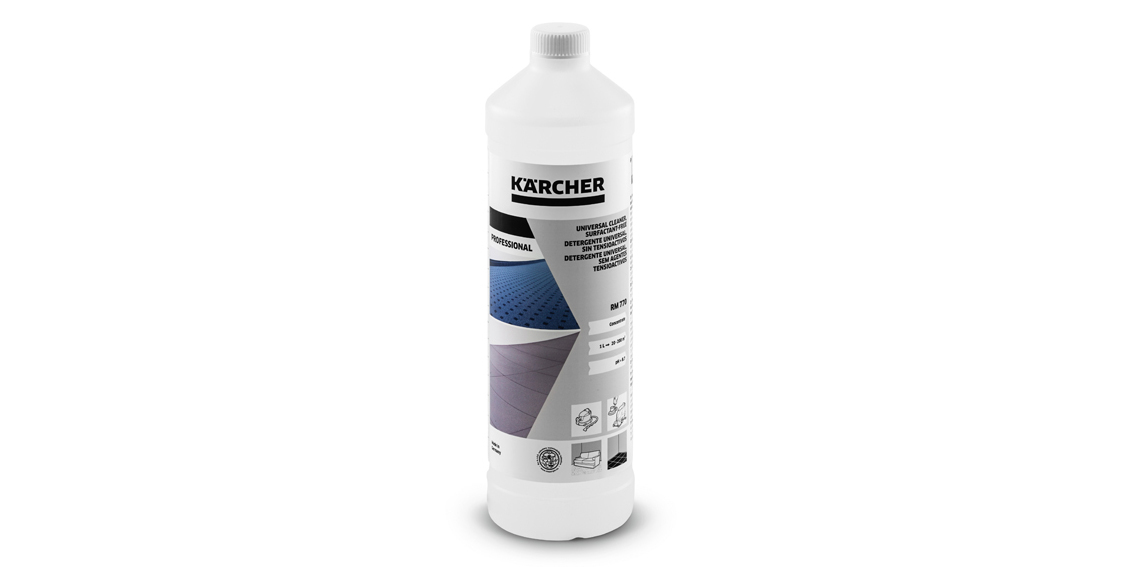Basic carpet cleaning
Even with regular cleaning, intermediate cleaning doesn’t always achieve the desired results. That’s when you need to take extra measures to keep your carpet clean. There are three main methods to keep your carpets clean and pristine as long as possible. Spray extraction, wet carpet shampooing or the combination method, which combines spray extraction with the microfiber/yarn method.
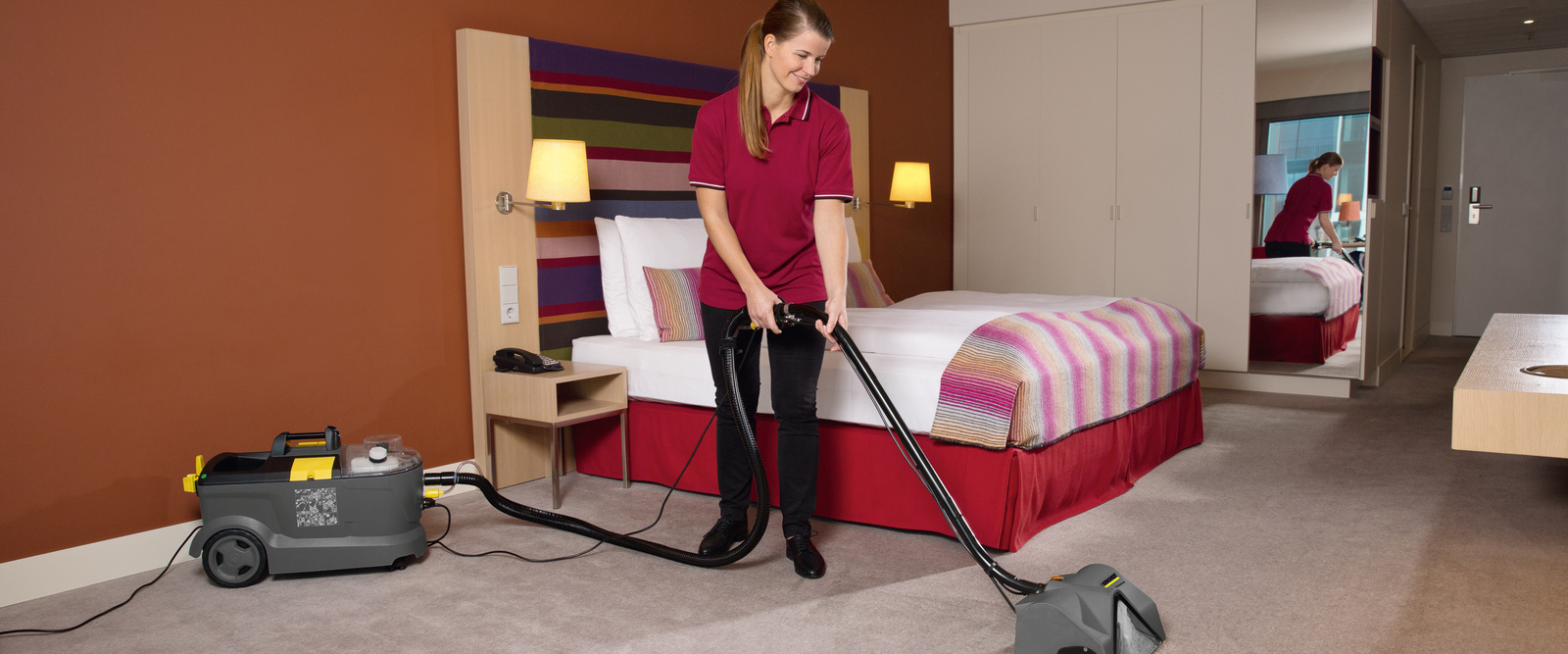
Preparation for basic carpet cleaning
Check the cleanability of the carpet before work starts. Take notice of the underlay, adhesive/fixing, carpet backing, backing material as well as seams.
If the carpet is cleanable, you need to take some preparatory measures first. The underfloor heating should be turned off in good time so that the applied cleaning agent does not dry out due to the heat. Movable furniture should be removed, sketches or photos can be made to put things back later. Components that cannot be removed should be protected with foil to avoid damage. Once the room is prepared, remove loose dirt with a hoover or a carpet brush vacuum.
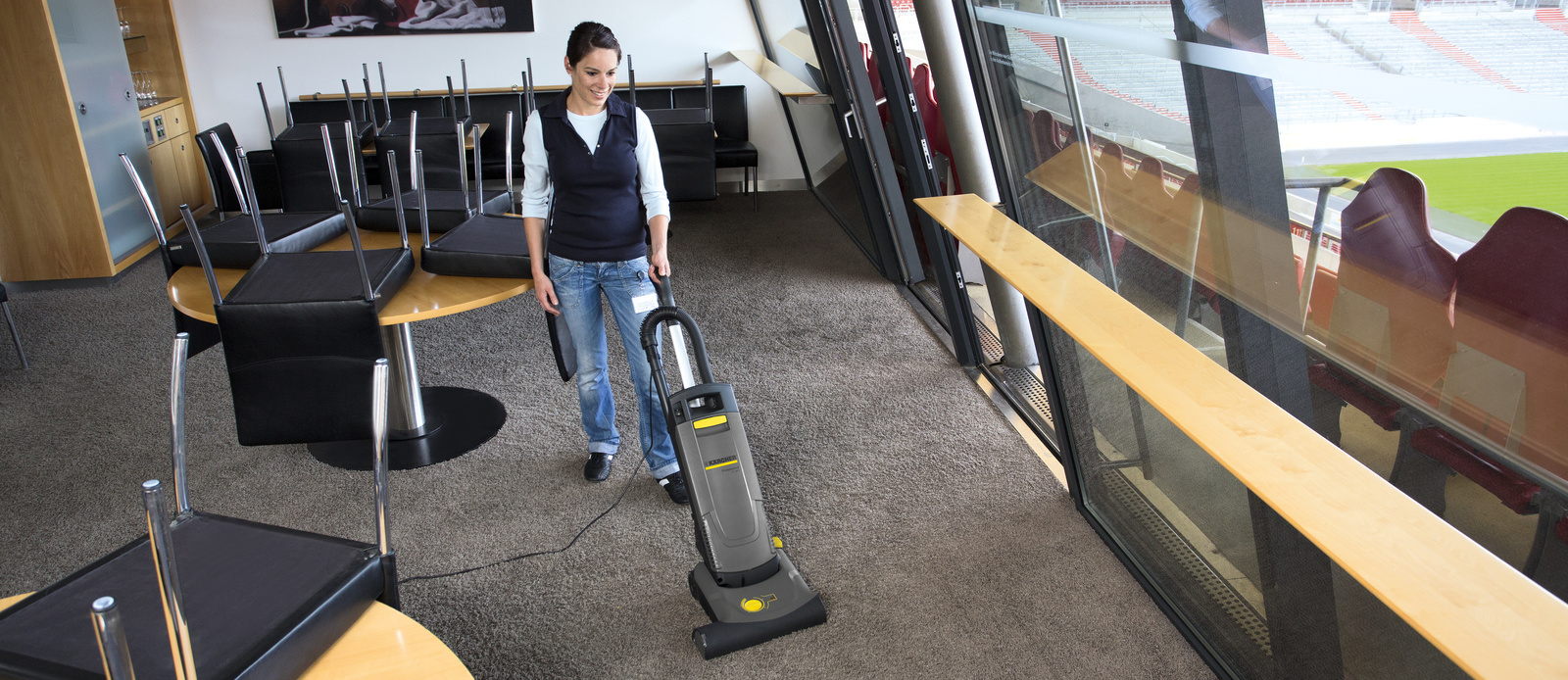
Carpet cleaning
Carpet feels warm, muffles noises and creates a feel-good atmosphere. Depending on the material and quality, textile floor coverings are quite sensitive to moisture. Removing stains, which is not a problem with other coverings, involves more effort. This can quickly lead to an unkempt appearance. Carpet cleaning requires a certain amount of expertise, because it is important to know the structure of the textile covering as well as the cleaning characteristics of the individual components. Here's what to consider when cleaning carpets and how to quickly remove stains during maintenance cleaning.
Basic carpet cleaning: Spray extraction for textile coverings
The spray extraction process can be applied 1-stage and 2-stage. The dirt needs to be brought to the surface and removed.
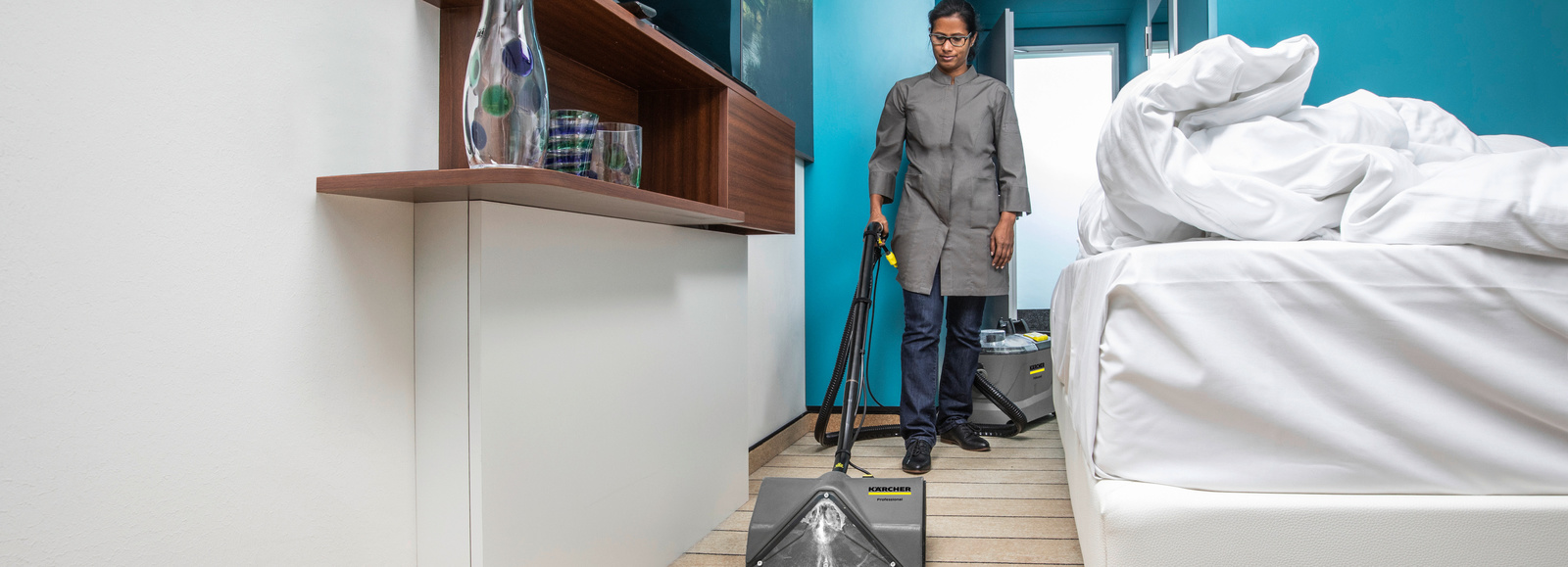
How it works
The spray-extraction cleaner pressurises the cleaning solution into the carpet so that the dirt can be loosened and then sucked off again as a solution with dirt. During the first step, you apply the cleaning solution with the nozzle and immediately remove it again, leaving the coating relatively dry. During the second step, switch the suction on the spray-extraction cleaner off, allowing the cleaning solution to act after its application and sucked off with the dirt solution afterwards.
Depending on the degree of soiling, several rinsing cycles are necessary until the desired result is achieved. The rinsing effect improves as the water flow rate increases.
Tip – cleaning large surfaces:
If large areas are involved, you can also apply the cleaning solution with a high-pressure spray cleaner in the second step.
Tip – cleaning the surface:
If you are using the spray-extraction cleaner with cleaning agent, rinse the surface once or twice afterwards with clean water. Work in overlapping layers. To reduce the drying time, you can vacuum the surface dry on the last run or place a fan in the room afterwards to remove excess moisture.
Tip – reducing post-wash care:
Using a surfactant-free cleaner instead of a carpet shampoo reduces the rinsing effort and there is no resoiling due to surfactant residues in the carpet.
Combination method for basic carpet cleaning: concentrated power for carpeted floors
If the carpet is heavily soiled, you can improve the effect of the spray extraction by using additional tools. In these cases, you should also use the microfibre/yarn pad method or the carpet shampooing brush.
Pros and cons
Shampooing the carpet is only possible with detergents containing surfactants and introduces a lot of surfactants into the floor, with residues often increasing resoiling. This makes the microfibre/yarn pad method in combination with surfactant-free cleaning agents a better method. As with spray extraction, there is a risk of soaking, which is why it is best used on floors and surfaces that are not sensitive to moisture.
Intermediate carpet cleaning
Carpets are beautiful, pleasant and noise-absorbing. However, even with regular cleaning, over time tracks or traces of stubborn dirt form that can no longer be removed by vacuuming and stain removal. You should carry out regular intermediate cleaning to extend the time between deep basic cleaning. The techniques from iCapsol to microfibre or yarn pads are also suitable for moisture-sensitive coverings and underlays or areas that need to be quickly accessible again, such as hotel lobbies or corridors.
How it works
If the single-disc machine is equipped with a shampooing brush or microfibre/yarn pad, the first step is to run off the floor covering in two lanes with a water supply or to wet it with a high-pressure spray cleaner. Then work the cleaning solution into the floor with the water supply closed. Edges and corners must be worked manually.
In the second stage, rinse the covering with clear water or a suitable carpet shampoo using the spray-extraction cleaner in slightly overlapping paths. You can treat hard-to-reach areas with a hand nozzle.
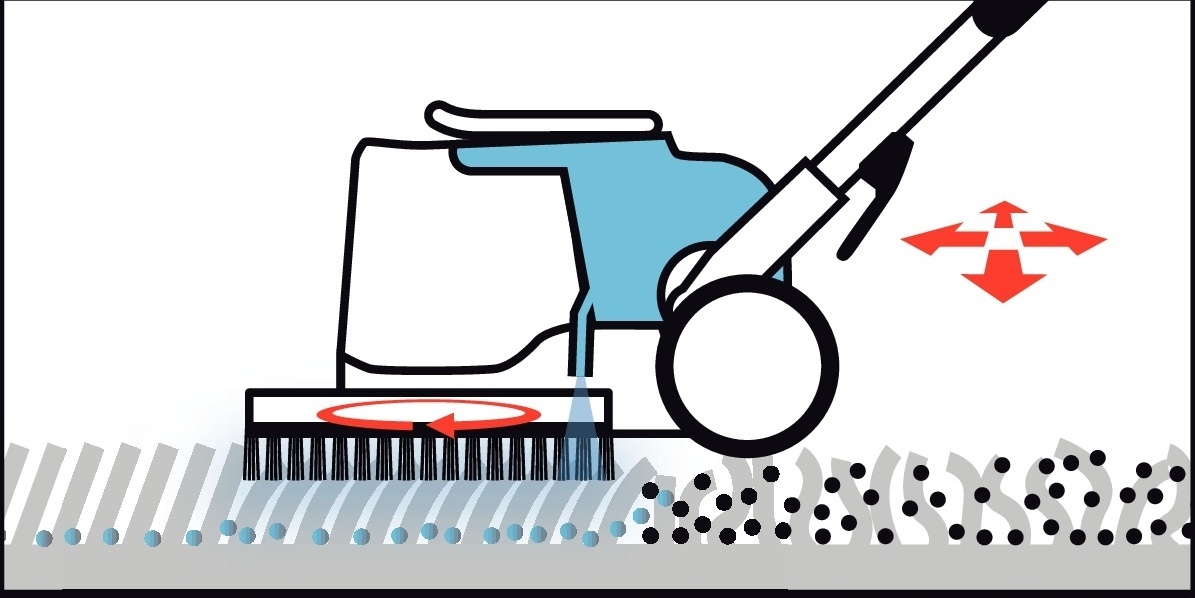
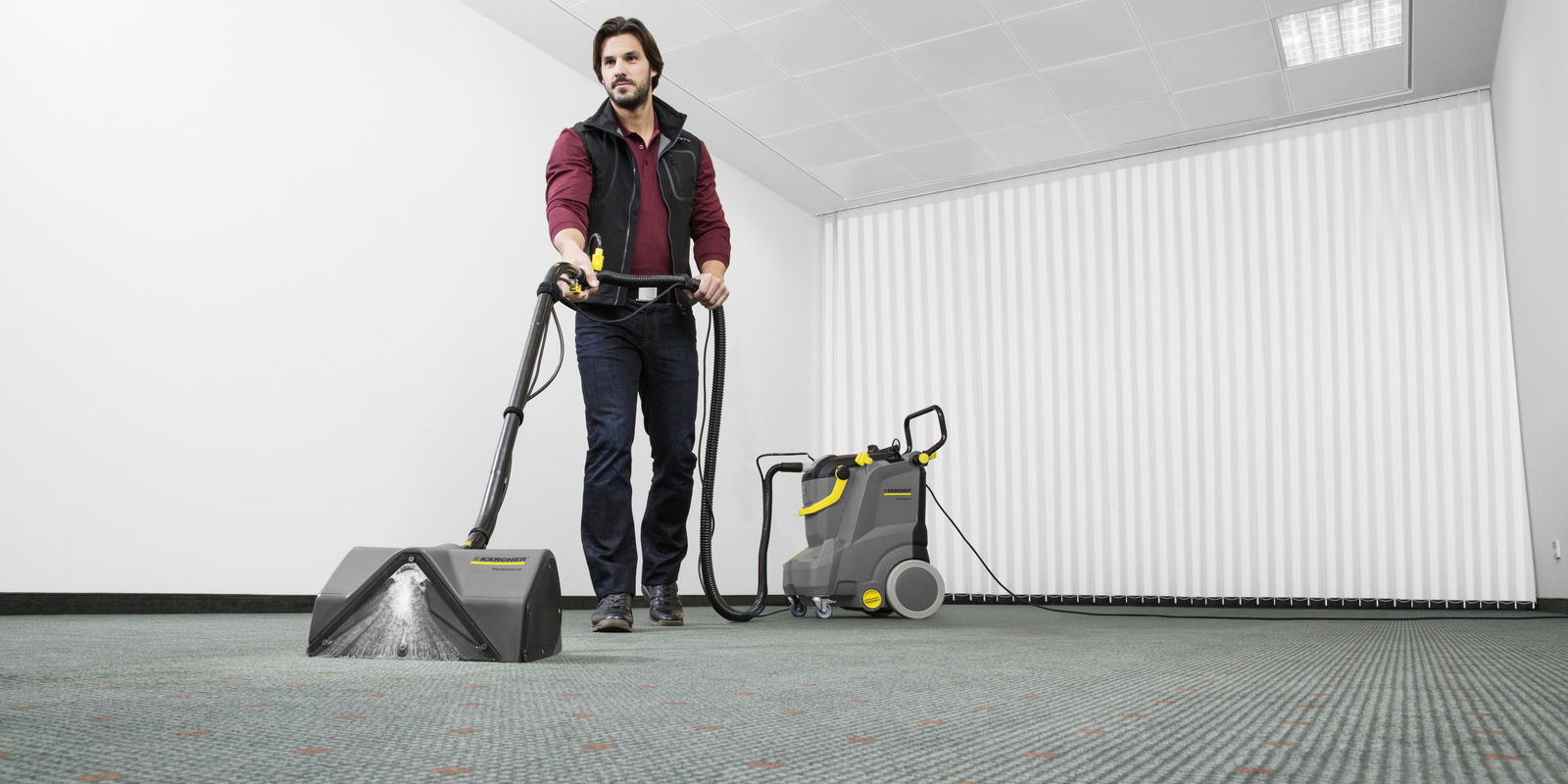
Carpet drying: drying time and carpet comb
Regardless of whether you work only with spray extraction or with the combination method, the carpet must be allowed to dry after cleaning. During the drying period, ensure good ventilation or even accelerate the drying process with an air blower. Furniture should only be put back again when no moisture remains in the floor. This avoids corrosion or discolouration due to residual moisture.
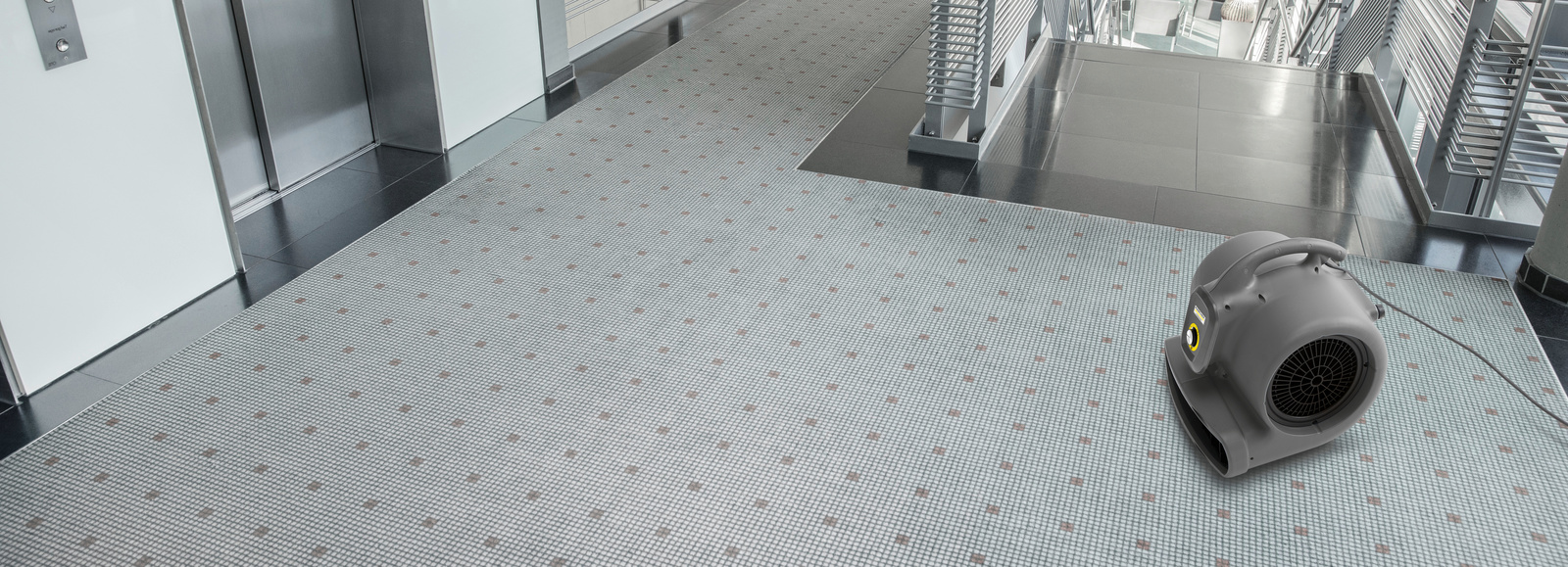
Tips – use a carpet comb:
You can straighten the pile with a carpet comb after cleaning velour-type coverings. You can also use a clean scrubbing brush.
Waterproofing carpets
Many textile coverings are waterproofed at the factory – a protection that is lost over time due to the mechanics of foot traffic as well as being limited by cleaning agent residues. If water is dripped onto the textile covering, the drops should remain on the surface for a short time, because then the waterproofing is intact. If the drop sinks in immediately, the carpet is no longer waterproofed or needs to be renewed.
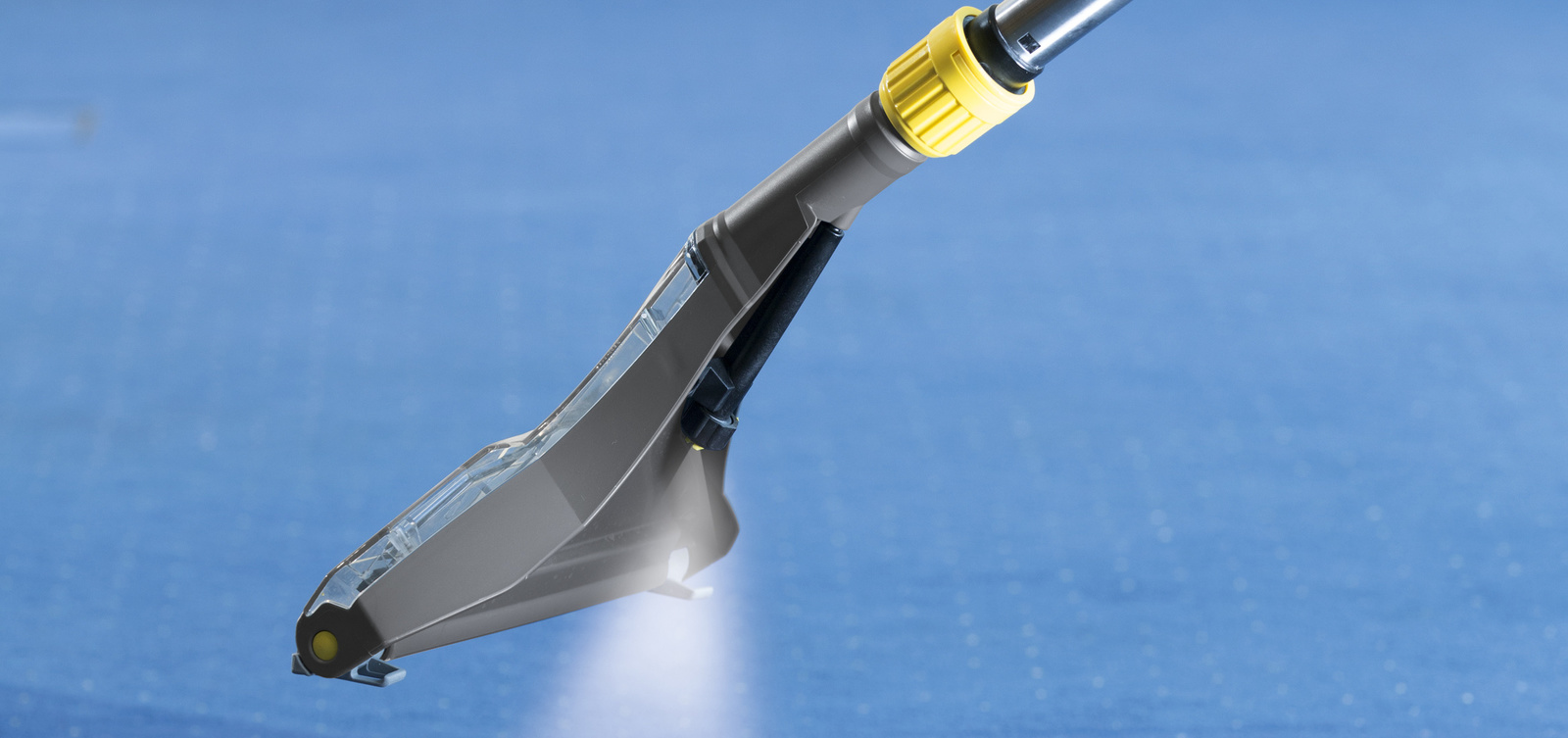
How carpet waterproofing works
Dose the waterproofing solution according to the manufacturer's instructions and put into a high-pressure spray cleaner or a spray-extraction cleaner. Then wet the carpet at a distance of approx. 30 centimetres, this is also possible on a wet surface
To achieve a deep penetrating effect, you can work the solution into the surface with a soft brush when damp. For larger areas, we recommend you use a counter-rotating roller pad.
Tip – pay attention to drying time:
Don’t step on the carpet until it is fully dry.
Tip – waterproofing:
If the carpet is laid in areas where dirt is difficult to remove, we recommend waterproofing.
Suitable products for your area of application
The CarpetPro Cleaning Agents
CarpetPro Range: Maximum cleaning power and long-lasting protection for all carpets and upholstery
CarpetPro cleaning and care agents are perfect for use with Kärcher cleaning appliances. From stain removal to intermediate and deep cleaning, to impregnation – tough on dirt, gentle on fibres. The patented iCapsol cleaning technology saves time on cleaning and drying.

